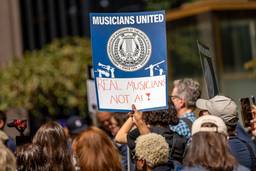U.S. workplaces are getting safer, according to national Department of Labor statistics for the past two decades. But immigrant workers in the most dangerous occupations have not shared in the increased safety, according to statistics and a recent report by seven worker centers nationwide.
On March 9 Arise Chicago Worker Center released their study, done in conjunction with other workers centers, wherein 208 predominantly Chicago immigrant workers were surveyed about their workplace health and safety experiences.
About a quarter of workers reported suffering a work-related injury or illness; and a disturbing 41 percent said they had never received safety training on the job and 31 percent said they were not provided protective equipment. The workers, 88 percent Latino with an average age of 39, worked primarily in low-wage jobs in construction, restaurant, cleaning and maintenance jobs.
Construction is known to be a dangerous occupation, but the survey found even immigrant workers in the other seemingly less-dangerous fields suffered high rates of illness and injury.
Work-related injury and illness can be especially devastating for undocumented workers since they are often fired because of their injury and they often don’t collect workers compensation or other benefits due them. Because of their immigration status and unfamiliarity with their rights, they often don’t complain. The survey found 59 percent of workers were not aware of the Occupational Safety and Health Administration (OSHA); and 87 percent had never filed a complaint against their employer.
Arise Chicago’s report says:
“Job ghettoes,” where foreign-born groups seeking employment provide a steady stream of workers to jobs that are undesirable to US born workers — in residential construction, agriculture, and service — tend to be the most hazardous jobs and the jobs that fly below the radar of wage and hour regulation. Lack of training and absence of OSHA-mandated engineering controls, administrative controls, and personal protective equipment are further contributors. Finally, language, literacy, experience, and cultural factors may play a role.
Workers and immigrants rights advocates think official safety statistics for industries including manufacturing, meatpacking and construction greatly undercount injuries and accidents, for this reason. A 2009 Government Accountability Office report says non-fatal workplace injuries could be under-reported by 80 percent.
The GAO report says:
In 2007, there were approximately 4 million cases in which workers in the United States were injured or became ill as a result of unsafe or unhealthy working conditions, and more than 5,600 workers died as a result of their injuries…The rate of nonfatal occupational injuries and illnesses among private sector employers as reported by BLS in 2007 has generally declined since 1992; the rate of worker fatalities decreased from 1992 to 2001, and has remained relatively constant since 2002.
But…
OSHA overlooks information from workers about injuries and illnesses because it does not routinely interview them as part of its records audits…In addition, some OSHA inspectors reported they rarely learn about injuries and illnesses from workers since the records audits are conducted about 2 years after incidents are recorded. Moreover, many workers are no longer employed at the worksite and therefore cannot be interviewed. OSHA also does not review the accuracy of injury and illness records for worksites in eight high hazard industries because it has not updated the industry codes used to identify these industries since 2002.
Arise Chicago cites government statistics in noting that Latino workers are disproportionately impacted by workplace health and safety problems, in Illinois and nationwide. Foreign-born Latinos also suffer injury and illness at a much higher rate than U.S.-born Latinos.
In Illinois, the fatality rate per 100,000 full time employees has decreased, on average, from 1997-2002. However, Hispanic workers have not experienced the same trend in the State. In addition, Hispanic workers’ average age at death, 34.9, was found to be approximately 10 years lower than non-Hispanic workers, 45.
To mitigate the injuries and illnesses suffered by low-wage and immigrant workers, Arise Chicago recommends increasing both workers’ awareness of their rights and enforcement by government agencies. Workers centers can play an important role, the study says, by offering workers information, support and advocacy. It also recommends support for the OSHA Susan Harwood Training Grants, meant to help improve workplace training and safety. These grants can go to unions, non-profit groups, employers groups and other entities.
The report also recommends increasing penalties for health and safety violations, which now often amount to little more than a slap on the wrist. And it recommends OSHA officials collaborate with workers centers and other community groups who have more grassroots contact with workers. And it says the Department of Labor’s two separate enforcement arms, the Wage and Hour division and OSHA, should cooperate more closely.
Kari Lydersen is a Chicago-based journalist, author and assistant professor at Northwestern University, where she leads the investigative specialization at the Medill School of Journalism, Media, Integrated Marketing Communications. Her books include Mayor 1%: Rahm Emanuel and the Rise of Chicago’s 99%.








